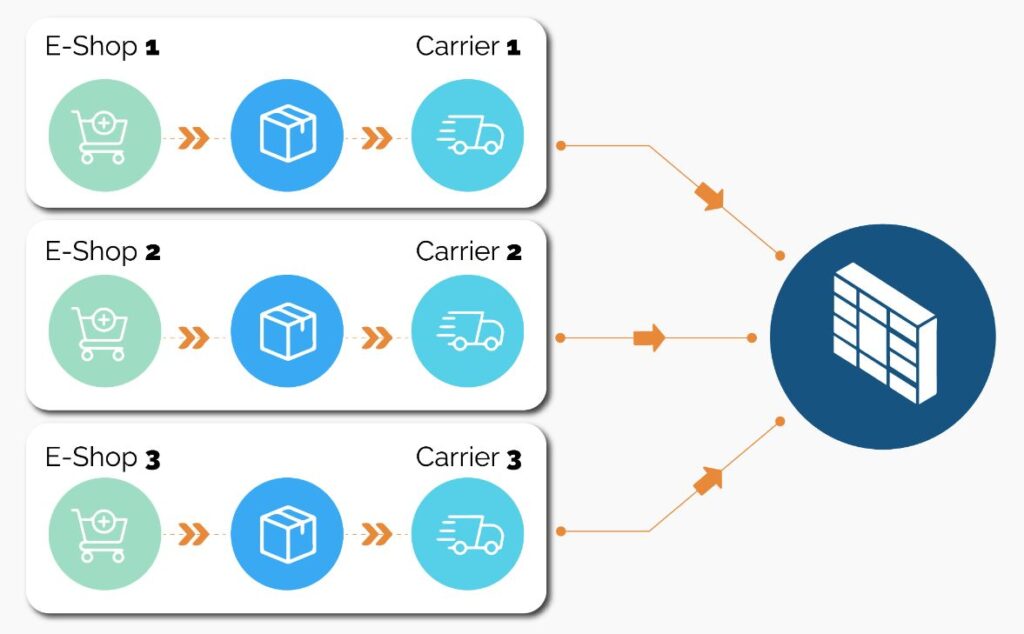I’m headed to the supermarket. At the entrance I get a good reminder of how we, Estonians, embrace technology – APM’s or Automated Parcel Machines are placed around the entrance, to enable us, the consumers, to order and pickup our e-commerce orders conveniently 24/7. In the month of May (’22) Estonians ordered a total of 1 million parcels into APM’s (source: Eesti E-kaubanduse Liit | Ühendame e-kauplejad, e-poed), let’s not forget – Estonia’s population is a whopping 1.3 million.
Already a decade this kind of services have been developed in EE and even in smaller, rural areas people enjoy being in charge of their deliveries 24/7×365.
However, what I don’t understand is why do we need to have so many different networks? In pictured location – 6* (although I’m not sure if CollectNET does still offer services)

*Google maps photo
I can’t imagine that all these networks being economically viable for the operators. I know from my previous role with Omniva (Estonian Post) how CAPEX heavy investments are needed to reach network density which drives consumers to use OOH (Out-of-Home) as preferred delivery channel. Plus, operators would need to replace 20-30% of the APM’s within 7 to 10 years of operations. Finally, I must add it is not visually pleasing to have so many different colors and sizes of the machines installed in a single commercial area.
Why can’t there be cross-usage of APM infrastructure amongst the different networks and companies to optimize the investments and infrastructure? Simply to be able to reach more end-customers because of dense network. Why should I, as a consumer wait for extended time to receive my parcel from network A when network B has free capacity? Why should I install different APPs on my phone to receive my parcel? Why should I sign up for different loyalty programs? Why should I receive parcels as door delivery (I’m always stressed if I have a parcel to my door address) simply because some parcel carriers do not have access to the (shared) APM infrastructure?

*Shared infrastructure – several merchants and carriers use the same infrastructure
Using shared infrastructure certainly has its challenges and requires detailed planning – APM operations such as filling and emptying, capacity management and locations planning as well as (data) security, and privacy, etc. Such model brings however several major benefits for all stakeholders:
Every merchant or parcel carrier who has an OOH strategy will face these challenges should consider an open network model where every participant has gains – reduced risk, more reach (density) and simply a better OOH experience for online shoppers.
Our team @ CollabNET is doing exactly that – we facilitate and implement open and shared APM networks in both mature and emerging e-commerce markets.
Our aspiration is to offer significant efficiency increases for last mile delivery and best possible shipping experience. We achieve this by sharing our knowhow and experiences how to efficiently operate an APM network and by educating the end-customers to embrace this flexible delivery channel. Most importantly, we offer robust and intuitive technology to connect processes and physical APM infrastructure in a low overhead, quick and agile package.
Estonia is a real locker (APM) land for more than a decade and we have so much experience, failures, and learnings we want to share with merchants and carriers globally to improve the out-of-home last mile delivery efficiency and user-experience. Every problem you face setting up an APM network, we most probably came across. Get in touch with our experts!

Creating better logistics through shared assets and technology
| Cookie | Duration | Description |
|---|---|---|
| cookielawinfo-checkbox-analytics | 11 months | This cookie is set by GDPR Cookie Consent plugin. The cookie is used to store the user consent for the cookies in the category "Analytics". |
| cookielawinfo-checkbox-functional | 11 months | The cookie is set by GDPR cookie consent to record the user consent for the cookies in the category "Functional". |
| cookielawinfo-checkbox-necessary | 11 months | This cookie is set by GDPR Cookie Consent plugin. The cookies is used to store the user consent for the cookies in the category "Necessary". |
| cookielawinfo-checkbox-others | 11 months | This cookie is set by GDPR Cookie Consent plugin. The cookie is used to store the user consent for the cookies in the category "Other. |
| cookielawinfo-checkbox-performance | 11 months | This cookie is set by GDPR Cookie Consent plugin. The cookie is used to store the user consent for the cookies in the category "Performance". |
| viewed_cookie_policy | 11 months | The cookie is set by the GDPR Cookie Consent plugin and is used to store whether or not user has consented to the use of cookies. It does not store any personal data. |